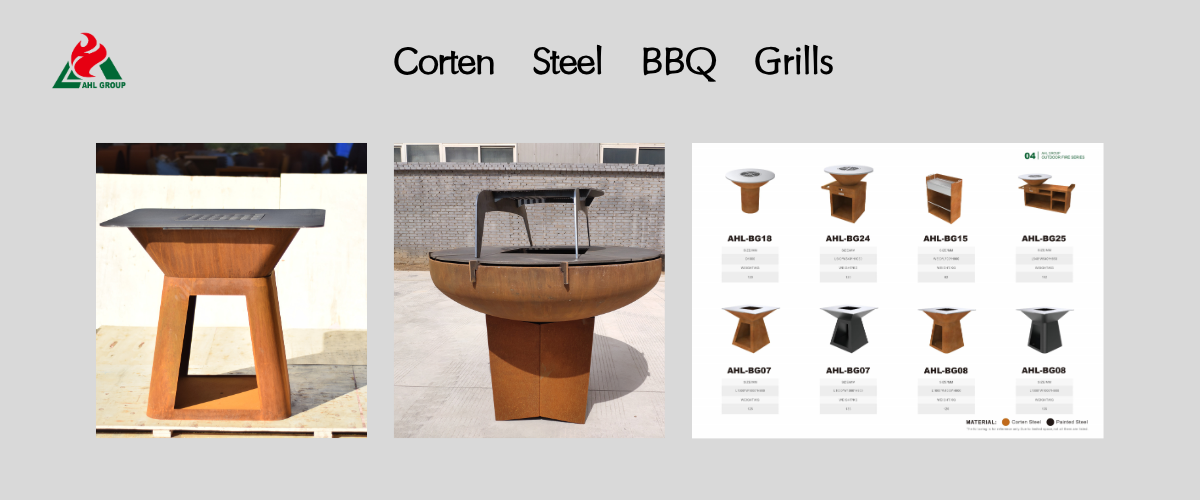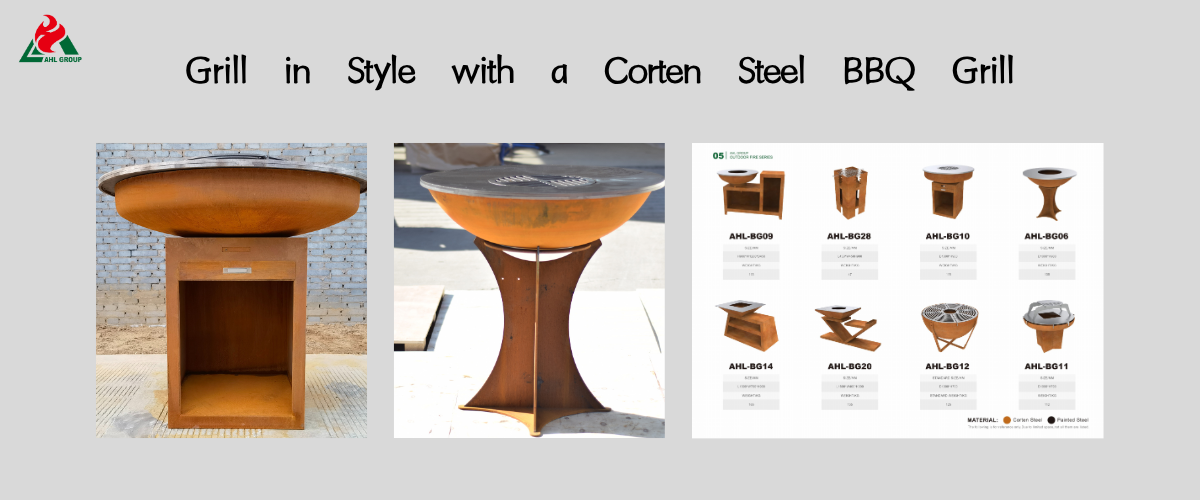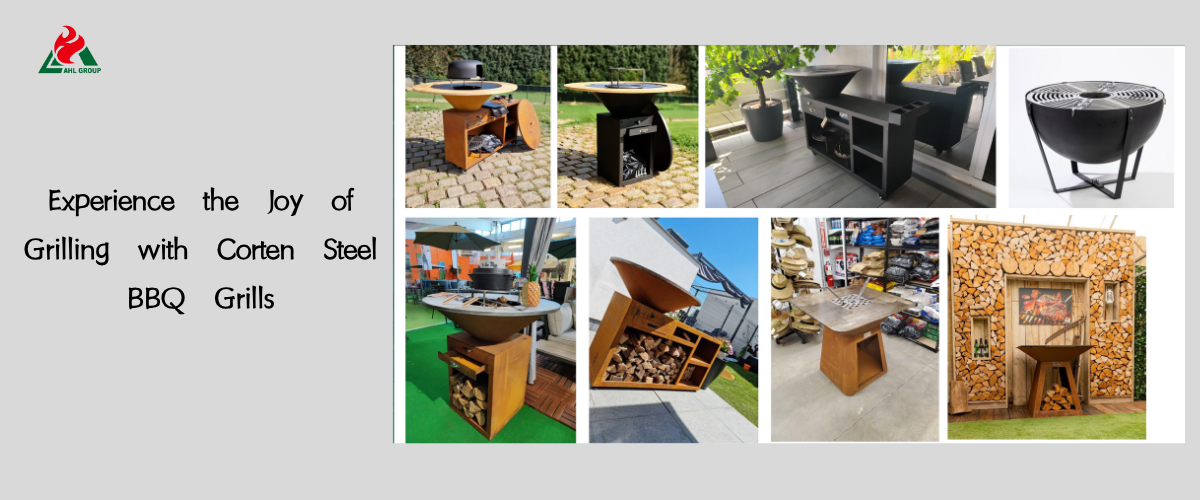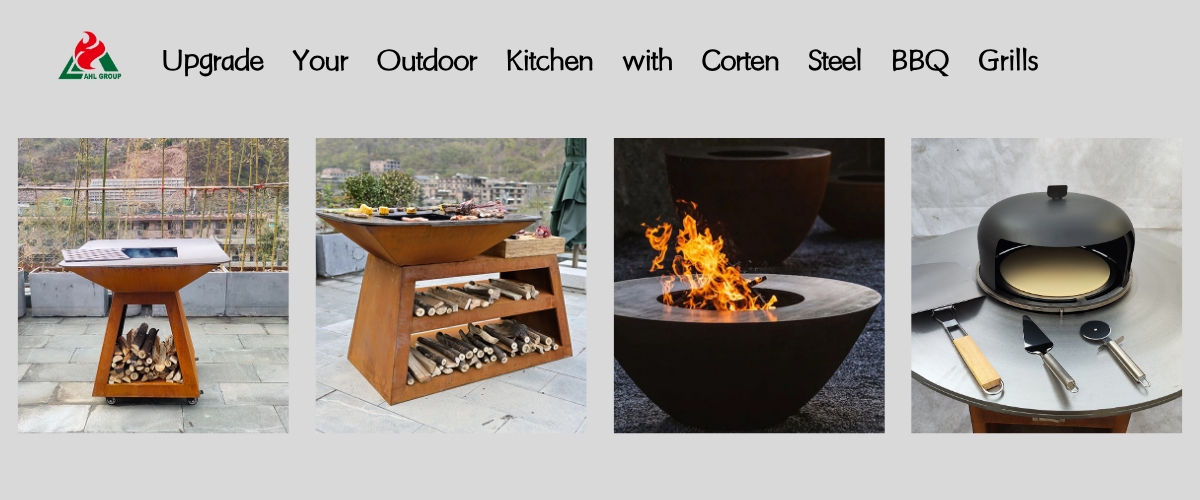Corten steel BBQ grills represent the ultimate investment in outdoor cooking. Renowned for their modern monolithic aesthetic and exceptional durability, these grills often feature integrated fire pits and cooking surfaces, engineered to withstand harsh weather conditions. However, even the most robust Corten steel fire pit installations require specific maintenance and troubleshooting measures to ensure optimal performance.
As experts at AHL Group, we understand the significant differences between using a Corten steel grill and standard stainless steel products. This guide provides concise, professional solutions to eight common issues encountered by users, helping you keep your grill looking like new for decades.

As experts at AHL Group, we understand the significant differences between using a Corten steel grill and standard stainless steel products. This guide provides concise, professional solutions to eight common issues encountered by users, helping you keep your grill looking like new for decades.

Introduction to Corten Steel BBQ Durability
The Enduring Properties of Weathering Steel
Weathering steel (also known as Corten steel) possesses self-protective qualities. Its unique alloy composition enables it to form a dense, stable outer layer—a rust patina—when exposed to air and moisture. This rust layer seals the metal surface, preventing further corrosion. This inherent durability makes your weathering steel grill highly resistant to thermal stress and harsh weather, creating an outdoor structure requiring virtually no maintenance.
Why Proper Maintenance Solves Most Issues
While the steel itself is robust, BBQ grill components like grates and fire bowls endure high temperatures, residue buildup, and initial weathering. Most user concerns stem from misunderstanding the rust layer's curing process or improper airflow and heat management—issues easily resolved with minimal effort.
Common Problems You Might Encounter
Below are common issues encountered by Corten steel grill users and expert solutions:
Issue 1: Uneven Heating and Hot Spots
Many Corten steel grills are designed with large open fire pits, making heat distribution harder to control compared to traditional covered grills.
Solution: Master fuel placement techniques. For direct grilling, stack charcoal or wood evenly in the center area. For indirect cooking, push fuel to one side or arrange it in a ring-shaped hollow structure. Ensure fuel is fully ignited and burning evenly before placing food. Use a chimney starter to maintain stable charcoal temperatures.
Issue 2: Excessive Smoke During Seasoning
During initial use, the grill may produce unusual smoke unrelated to food.
Solution: This is typically caused by burning residual oils or sealants. Corten grills require several high-temperature, food-free firings during initial seasoning. Run the empty grill at high heat for 30-60 minutes to fully burn off factory coatings and stabilize the early rust layer.
Issue 3: Rust Stain Contamination on Patios or Wood Decks
The most common aesthetic issue is weathering steel rust runoff. This highly pigmented residue can seep into light-colored patios, pavers, or wood decks, creating stubborn stains.
Solution: Control runoff promptly. The best approach is physical prevention: place the grill on a gravel bed or dark concrete pavers, or position a dark weatherproof tray beneath the grill to catch runoff.
Issue 4: Difficulty Controlling Airflow
The flame or heat intensity is unstable, or the fire goes out too quickly.
Solution: Inspect the airflow control valve (vent) at the bottom of the fire bowl (if present) to ensure it is not clogged with ash. Airflow fuels the flame; fully opening the valve provides high heat, while closing it extinguishes the flame and lowers the temperature. Regularly clean the ashtray to ensure proper ventilation for grilling.

Issue 5: Food Sticking to the Grill
Food persistently sticks to the cooking surface even after the barbecue grill is fully preheated.
Solution: Regularly season the BBQ grill. Thoroughly clean the grates, then coat them generously with high-smoke-point cooking oil (e.g., grapeseed oil, canola oil, or lard). Heat the grates until the oil smokes, then let them cool. Repeat this process 2-3 times before cooking to form a natural non-stick layer.
Issue 6: Grill Not Reaching Optimal Temperature
Fuel is burning, but the grill feels cold to the touch, especially on windy days.
Solution: Check fuel density and ash buildup. Ensure fuel quantity matches grill size. A thick layer of insulating ash at the bottom may block air vents, preventing fresh oxygen from reaching the coals. Always thoroughly remove old ash before each use.
Issue 7: Uneven or Streaky Appearance of External Rust Layer
The rust color appears mottled, displays a bright orange hue, or exhibits vertical streaks on the surface.
Solution: Time and patience. The weathering steel patina forms through repeated wetting and drying cycles. Streaks caused by water flow across the surface are normal. Do not attempt to clean or wipe the patina; simply allow the steel to continue weathering naturally. After 6 to 18 months, the color will deepen and become significantly more uniform.
Issue 8: Cracks or gaps appear
Fine hairline cracks or separation may be visible near welds or structural joints.
Solution: In high-quality AHL Group Corten steel grills, fine lines or gaps typically represent thermal expansion joints or controlled material shrinkage designed to accommodate extreme temperature fluctuations. Gaps under 1 millimeter are generally normal and part of the steel's natural response. For larger cracks, immediately consult the manufacturer's warranty terms.

Preventive Maintenance Tips for Corten BBQ Grills
Seasonal Cleaning and Storage Recommendations
Weathering steel requires minimal weather protection, but the cooking area still needs special care:
• Timely Ash Removal: Never leave ashes in the fire pit for extended periods, especially during humid weather, as this creates a corrosive environment.
• Grill Storage: After cleaning and re-oiling, store the grill indoors during off-seasons to prevent prolonged exposure to the weathered surface.
• No Covering: Never cover weathering steel surfaces long-term, as this traps moisture and delays the critical drying cycles needed to form a stable rust patina.
Promoting Even Rust Formation
For the deepest, most uniform rust color:
• Place the barbecue grill in an area with balanced climatic conditions.
• In extremely dry climates, occasionally mist the surface to initiate oxidation cycles.
• Avoid placing the outdoor BBQ grill entirely under porch eaves where it receives no rain, as this hinders stable rust layer formation.
Step-by-Step Fixes for a Longer-Lasting Grill
Managing and Directing Rust Runoff
• Elevation: Place the entire Corten barbecue grill base on small non-porous supports or blocks to raise it slightly.
• Platform Method: Lay dark decorative gravel around the grill perimeter to conceal and absorb seepage.
• Tray Method: To protect sensitive patios, place a large, heavy-duty metal or plastic tray beneath the base to collect drippings.
Grill Cleaning and Re-oiling
• High-Temperature Cleaning: After use, scrub the hot grill with a wire brush to remove adhered food residue.
• Cooling Rest Period: Allow the grill to cool completely.
• Re-oiling: Apply a thin, even coat of high-heat cooking oil using a paper towel across the entire cooking surface. Allow to dry before storing or next use.
Adjusting Ventilation for Optimal Temperature Control
• Clearing Vents: Ensure all bottom vents and baffles are free of ash and debris.
• Fully Open Bottom = High Heat: Keeping bottom vents fully open achieves maximum temperature and fastest burn.
• Top Adjustment: If your BBQ grill has a lid or top baffle, use it to control smoke and heat release from the cooking chamber. However, rely on the bottom vents to regulate oxygen supply for the flame.

Conclusion: Ignite Your Outdoor Entertaining with Corten Steel BBQ Grills
Corten steel grills are an investment that matures with age, delivering years of exceptional outdoor cooking experiences. By taking preventative measures to address minor issues like rust streaks, maintaining proper ventilation, and seasoning the grill, you'll not only keep your grill looking stunning but also ensure its reliable performance. These simple maintenance steps will let you enjoy the pleasure of this premium weathering steel grill for years to come.


